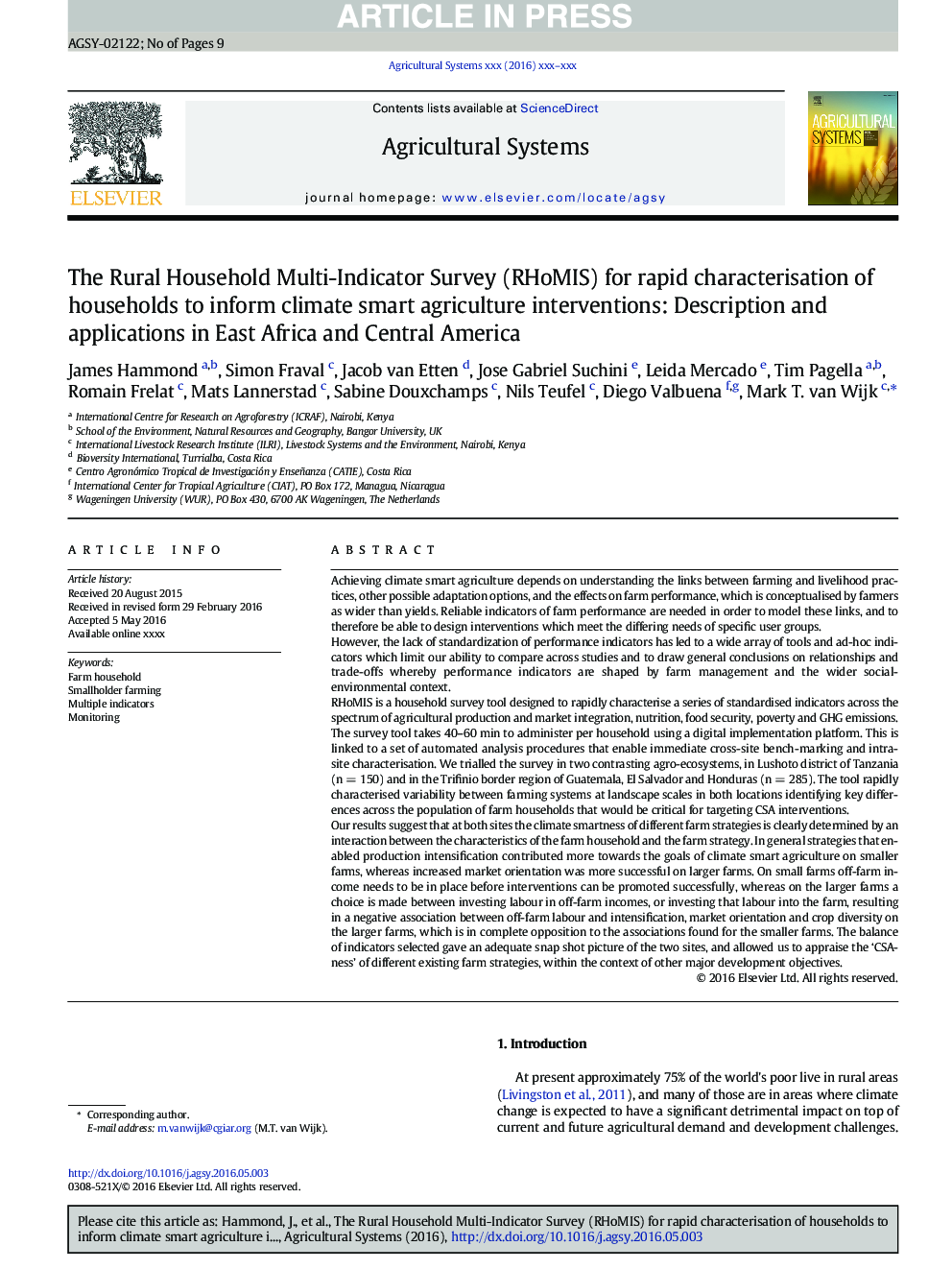| Article ID | Journal | Published Year | Pages | File Type |
|---|---|---|---|---|
| 5759773 | Agricultural Systems | 2017 | 9 Pages |
Abstract
Our results suggest that at both sites the climate smartness of different farm strategies is clearly determined by an interaction between the characteristics of the farm household and the farm strategy. In general strategies that enabled production intensification contributed more towards the goals of climate smart agriculture on smaller farms, whereas increased market orientation was more successful on larger farms. On small farms off-farm income needs to be in place before interventions can be promoted successfully, whereas on the larger farms a choice is made between investing labour in off-farm incomes, or investing that labour into the farm, resulting in a negative association between off-farm labour and intensification, market orientation and crop diversity on the larger farms, which is in complete opposition to the associations found for the smaller farms. The balance of indicators selected gave an adequate snap shot picture of the two sites, and allowed us to appraise the 'CSA-ness' of different existing farm strategies, within the context of other major development objectives.
Related Topics
Life Sciences
Agricultural and Biological Sciences
Agricultural and Biological Sciences (General)
Authors
James Hammond, Simon Fraval, Jacob van Etten, Jose Gabriel Suchini, Leida Mercado, Tim Pagella, Romain Frelat, Mats Lannerstad, Sabine Douxchamps, Nils Teufel, Diego Valbuena, Mark T. van Wijk,
